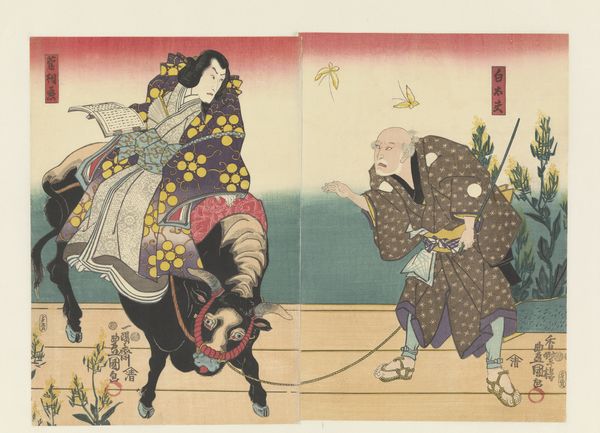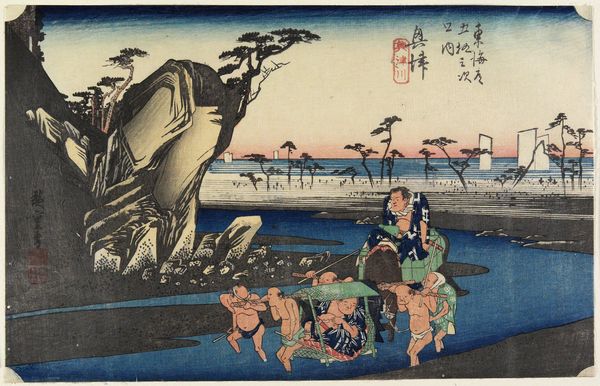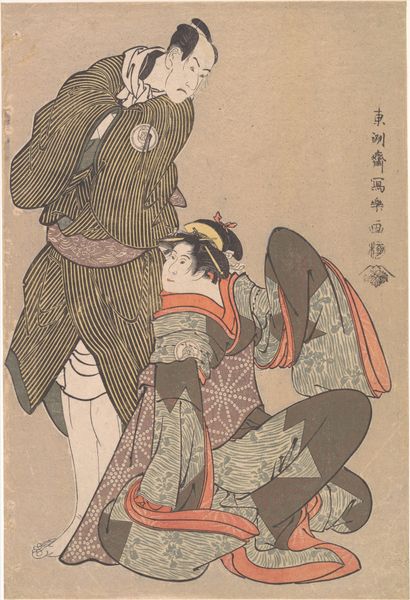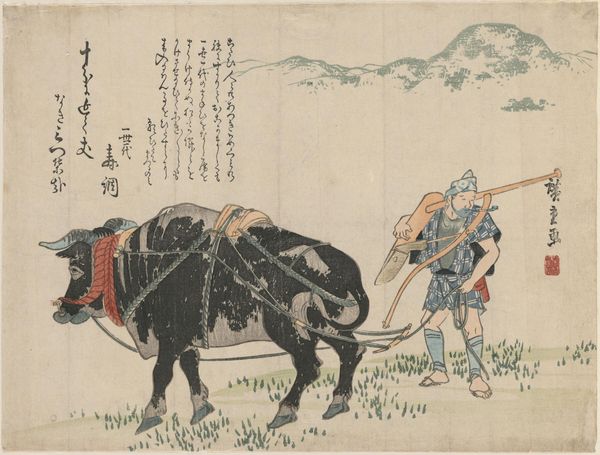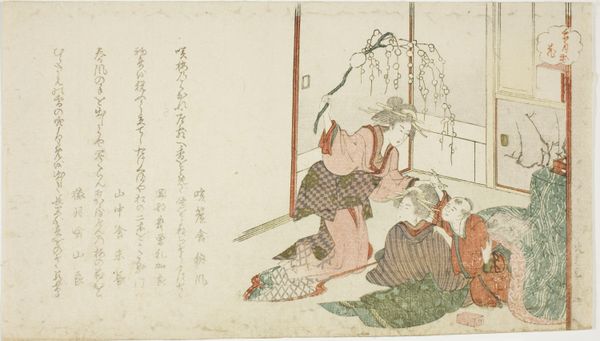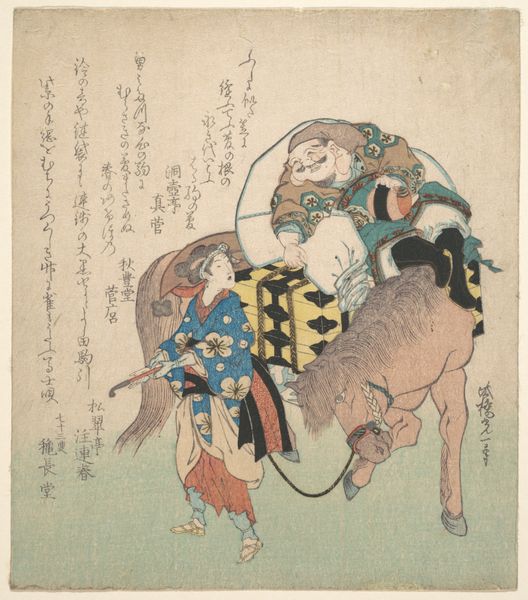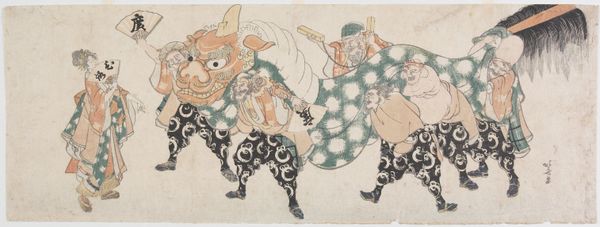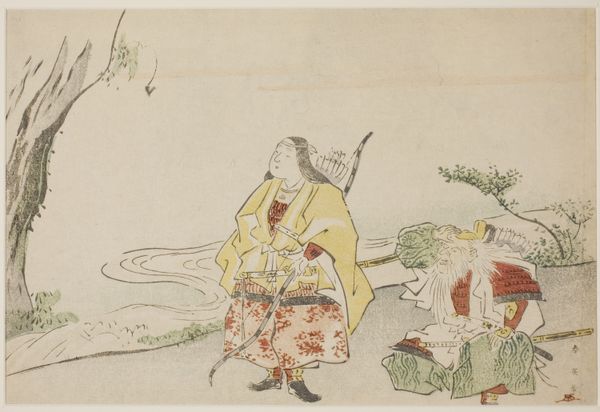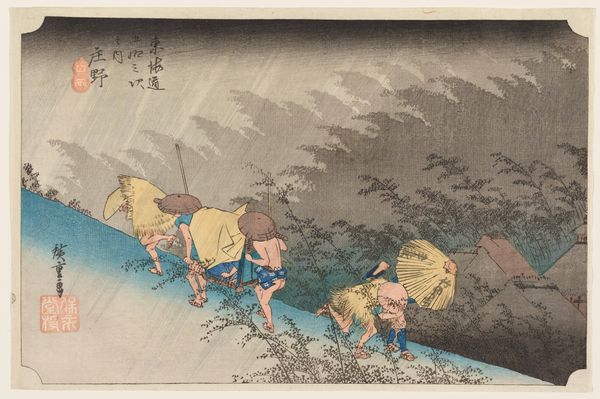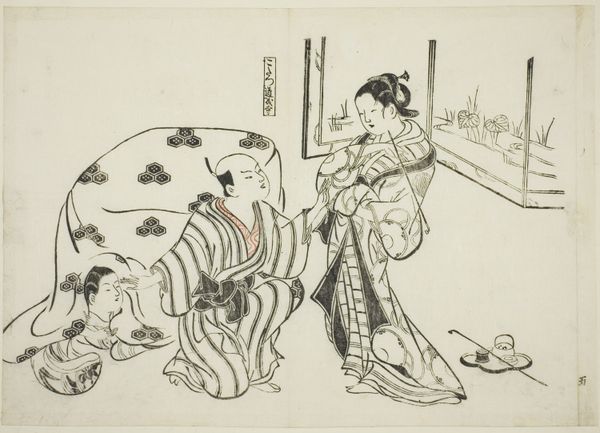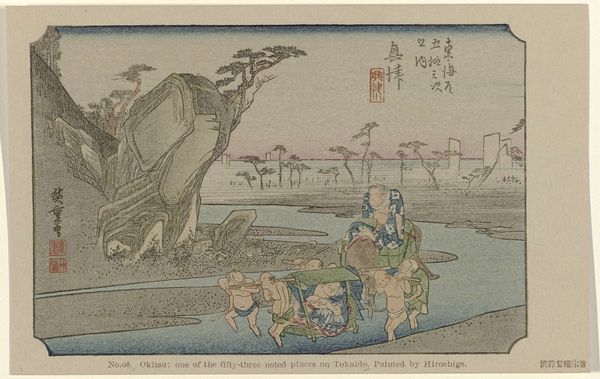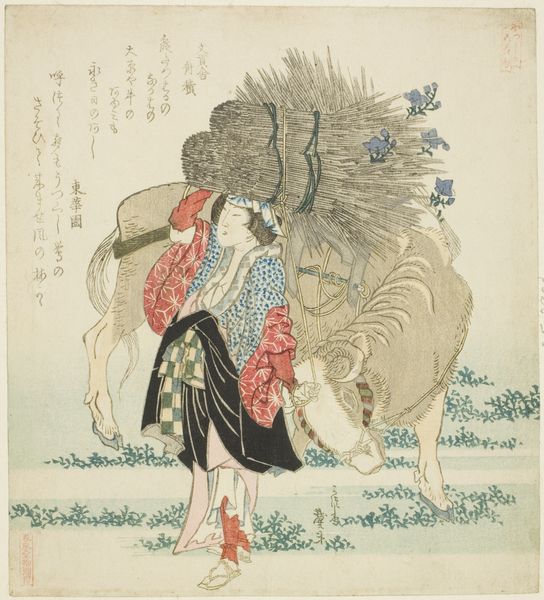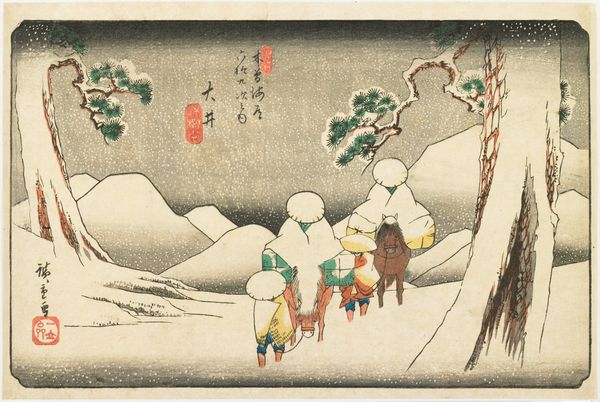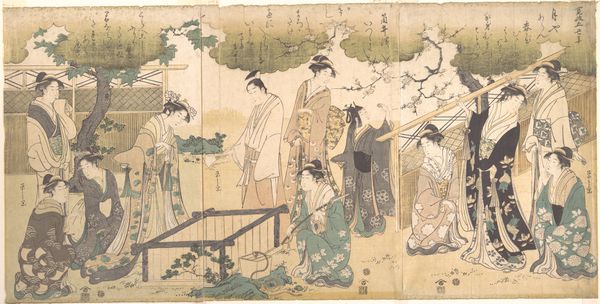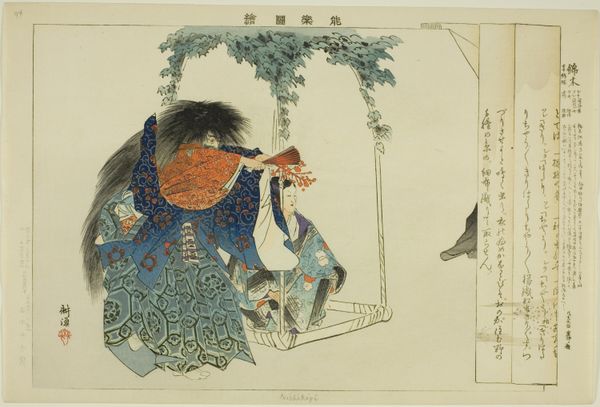
Dashun (Taishun), from the series "Twenty-four Paragons of Filial Piety as a Mirror for Children (Nijushiko doji kagami)" c. 1843
0:00
0:00
print, watercolor, woodblock-print
#
water colours
#
narrative-art
# print
#
asian-art
#
ukiyo-e
#
japan
#
figuration
#
watercolor
#
coloured pencil
#
woodblock-print
Dimensions: 24.5 × 36.9 cm (9 5/8 × 14 1/2 in.)
Copyright: Public Domain
Editor: This chromogenic woodblock print is titled "Dashun (Taishun), from the series "Twenty-four Paragons of Filial Piety as a Mirror for Children (Nijushiko doji kagami)", it was created around 1843 by Utagawa Kuniyoshi. I find the grouping of white elephants and birds rather unexpected, also I noticed it is called a "Paragon of Filial Piety" . How do you interpret this image? Curator: The white elephants are a powerful symbol. White elephants in Buddhist cultures, and specifically in Japan, are often associated with purity, benevolence, and royal power, stemming from the story of the Buddha's birth where his mother dreamt of a white elephant. They are a potent symbol of virtue. The filial son here utilizes the elephant in service of his family, emphasizing the weight of duty and reverence. What does the flock of birds suggest to you? Editor: Hmmm, that’s a great question… they appear to be surrounding both elephants and human. What’s interesting is I had never thought of elephants as part of Japanese art. Curator: The elephant, though not native to Japan, became known through Buddhist iconography and trade. So its image is laden with meaning derived from those sources. The flock of birds can suggest divine blessings responding to Dashun's filial devotion; or the harmony between nature and such a virtuous person. So the animals almost underscore and amplify his praiseworthy quality. The series presents models for children's moral development during that era. Do you find the symbolism effective? Editor: I hadn’t thought about that interpretation of the birds and filial piety, but it provides a richer context than I originally realized. Seeing all these components interacting gives it a whole new meaning, almost as if these creatures recognize a divine connection. I can definitely understand how this image would function as a great learning tool, a guide. Curator: Precisely! It speaks to how artists like Kuniyoshi utilized symbolic language to reinforce cultural values and narratives that had deep cultural resonance, as well as offering fascinating ways these can traverse and interact across borders and religions. It really encourages a deeper look at these symbolic visual languages.
Comments
No comments
Be the first to comment and join the conversation on the ultimate creative platform.
